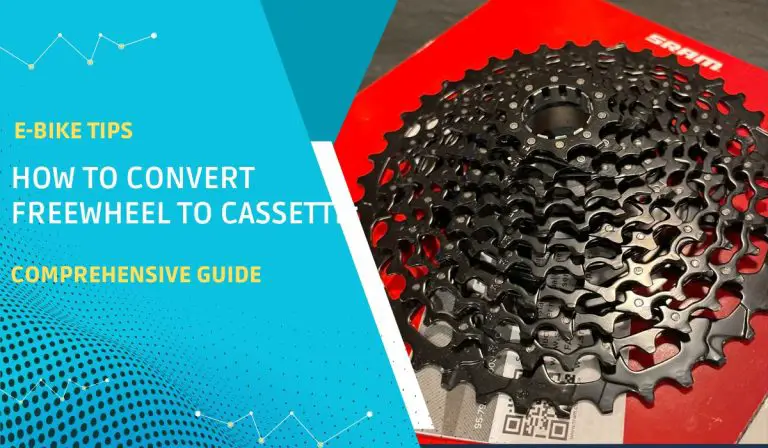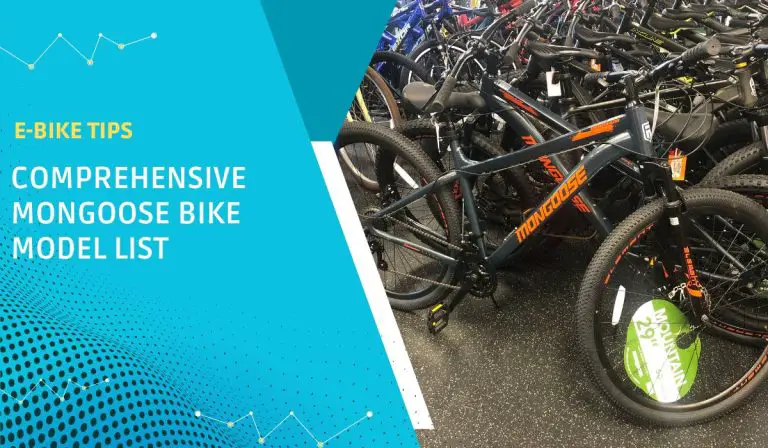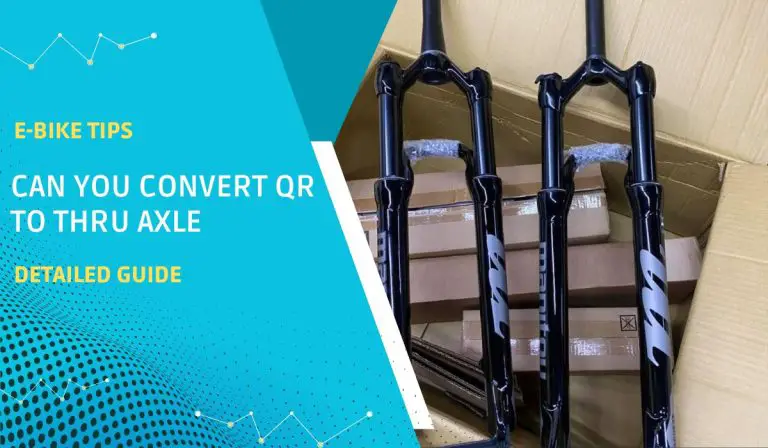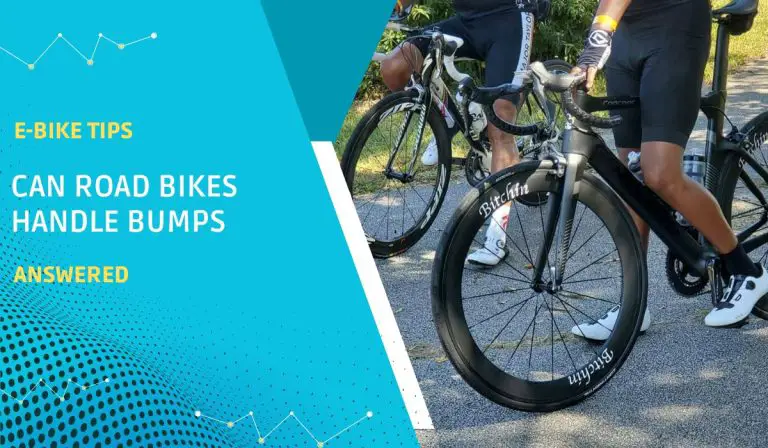The Stroker BMX bike is a 24- to 27-pound high-performance BMX bike that has been around since the 1970s and is built for speed and agility. It features a lightweight 20-inch aluminum frame, a strong 20-inch high bar, and high-quality components, including sealed bearings, a 25.4mm seat post, a cassette hub, and a double-wall alloy rim.
I’ve been riding BMX bikes for over 10 years, and I’ve owned a Stroker bike for the past 5 years. I’ve used it for everything from commuting to work to doing tricks in the skatepark. I’ve found that Stroker bikes are incredibly durable and can withstand a lot of abuse. They’re also very versatile and can be used for different purposes. If you’ve been planning to get the Stroker bike but are unsure if that’s a good decision, I’ll give you a detailed overview of this bike.
In the next few sections, I’ll take a look at the different features or specs of a Stroker BMX bike, including the frame, fork, wheels, and tires.
Skip To Section Here
Stroker BMX Bike Specs
To kick things off, here’s a table of specifications for the Stroker BMX Bike to help you get an overview of the bike’s specs:
| Specification | Description |
| Price | $200-$500 |
| Frame | Sturdy frame made of steel or aluminum |
| Frame size | 20 inches |
| Fork | Ashtabula fork |
| Stem | 31.8mm |
| Bars | Schwinn box bars |
| Bars length | 20.5 inches high |
| Grips | AME grips |
| Cassette hub | Wider gear range |
| Weight | 24 to 27 pounds, depending on the size and components |
| Weight capacity | Up to 250 pounds |
| Handlebars material | Chromoly steel |
| Handlebar geometry | 8.25-inch rise |
| Cranks | Asturbula cranks |
| Crank length | 170 mm |
| Pedals | KKT pedals |
| Chainguard | Yes |
| Wheels size | 20 inches |
| Wheels compatibility | Mongoose Motomags II, powder coated |
| Hubs material | Alloy |
| Tires | Kenda tires |
| Tire size | 20 x 2.125 inches |
| Bearings | Prevent dirt and moisture from entering. |
| BrakesV-brakes or U-brakesRimDouble-walledRims materialAlloySeatTroxel seat or other brands, depending on the modelSeat post25.4mmSteat post clampSchwinn AS seat post clamp |
Now that you’ve gotten a brief insight into the specifications of the bike, I’ll be explaining some of the specs in detail, like:
- Frame
- Fork
- Wheels
- Tires
- Brakes
- Drivetrain
- Handlebars and Grips
- Pedals
- Saddle
Frame
The Stroker BMX bike features a steel frame that is strong and durable. The frame has a geometry optimized for BMX riding, with a low standover height, a short rear end, and a steep head angle. The frame size is typically 20 inches, which fits most riders.
The frame is also powder-coated to protect it from rust and scratches. The bike’s frame is designed to withstand the rigors of BMX riding and provide a smooth and responsive ride.
Fork
The fork is made of steel, matching the frame and providing stability and durability. The fork has a 1-inch headtube size compatible with standard BMX stems and headsets.
It is also compatible with Motomag II wheels and classic BMX wheels with a distinctive look and performance. Ashtabula, a reputable manufacturer of BMX forks and cranks, makes the fork. The fork is designed to handle the impacts and jumps of BMX riding, providing smooth and responsive steering.
Wheels
The wheels of the bike come in two types: alloy and Motomag II. The alloy wheels are lightweight and durable, with a standard BMX rim and hub. The Motomag II wheels are powder-coated and made of magnesium, giving them a unique look and performance.
They are also heavier and stiffer than alloy wheels, making them more suitable for BMX riding. The bike’s wheels are designed to roll smoothly and withstand the rigors of BMX riding.
Tires
The Stroker BMX bike comes with Kenda tires, a popular brand of BMX tires. These tires are known for their good grip and durability, which are essential for BMX riding. The tires are 20 x 2.125 inches, the standard size for BMX bikes. The tires have a knobby tread pattern, which provides traction and control on different terrains, such as dirt, concrete, and asphalt. The tires are also designed to be lightweight and responsive, which makes them ideal for BMX tricks and stunts.
Brakes
The brakes on the bike can vary depending on the model, but most commonly use V-brakes or U-brakes. V-brakes are mounted on both the front and rear wheels and use a linear pull mechanism to provide reliable stopping power. U-brakes are mounted on the rear wheel only and use a side pull mechanism that offers more modulation and clearance. Both brakes are easy to adjust and maintain and have durable brake pads and levers.
The brakes on the bike are designed to provide safety and control for BMX riding. V-brakes are a good choice for riders who want strong stopping power, while U-brakes offer more modulation and clearance, which can be helpful for riders who are doing tricks or jumps. Ultimately, the best type of brake for a bike depends on the rider’s needs and preferences.
Drivetrain
The bike’s drivetrain is a single-speed system consisting of a freewheel, chain, and crankset. The freewheel allows the rider to coast without pedaling, and the chain transfers power from the pedals to the rear wheel.
The crankset is the component that connects the pedals to the chain, and it is available in either Ashtabula or alloy construction. Ashtabula cranksets are made of steel and have a classic BMX look and feel, while alloy cranksets are made of aluminum and are lighter and more modern. The crank length is typically 170 mm, which is a good fit for most riders.
The bike’s drivetrain is designed to be simple, durable, and efficient. The single-speed system is easy to maintain and requires no shifting, which makes it ideal for freestyle and street riding. The nickel-plated chain is resistant to rust and corrosion, and the Ashtabula or alloy crankset can withstand the rigors of BMX riding.
Handlebars and Grips
The bike has chromoly steel handlebars with an 8.25-inch rise. Chromoly steel is a strong and durable material commonly used in BMX bikes. The 8.25-inch rise provides a comfortable and upright riding position, ideal for beginners and riders who want a more relaxed ride.
The bike also has AME grips. AME grips are soft and comfortable, providing good grip and control. The grips are made of synthetic rubber, resistant to wear and tear.
The handlebars and grips of the bike are designed to offer comfort and maneuverability for BMX riding. The comfortable handlebars make it easy to control the bike, while the grips provide a secure grip even when riding on rough terrain.
Pedals
The pedals of the Stroker BMX bike are made of either metal or plastic, depending on the model. The metal pedals are made of KKT alloy and have good grip and durability. They are also more resistant to wear and tear than plastic pedals. The plastic pedals are made of MKS nylon, are lighter in weight, and have a smoother rotation. They are also less expensive than metal pedals.
Both the metal and plastic pedals of the bike are designed to offer traction and efficiency for BMX riding. The metal pedals have a concave surface that provides a good grip, even when wet or muddy. The plastic pedals have a smooth surface, allowing for a more efficient pedal stroke.
Riders who prefer a more aggressive riding style may prefer metal pedals for durability and grip. Riders who prefer a more casual riding style may prefer the plastic pedals for their lighter weight and smoother rotation.
Saddle
The saddle is a pivotal saddle that can be adjusted to tilt forward or backward. It allows riders to find the most comfortable position for their riding style. The saddle is also made of a durable material that can withstand the rigors of BMX riding.
The bike’s saddle is available in two models: the Troxel saddle and the Diamondback saddle. The Troxel saddle is a more padded saddle that offers more comfort, while the Diamondback saddle is a more streamlined saddle that offers more freedom of movement.
Riders who prioritize comfort may prefer the Troxel saddle, while riders who prioritize performance may prefer the Diamondback saddle.
Who Is the Stroker Bmx Bike For?
The Stroker BMX bike is a classic, vintage bike originally produced in the 1970s. It is known for its unique design, which features a box-shaped frame and straight handlebars. The Stroker is a popular choice for collectors and BMX enthusiasts alike.
The Stroker is a versatile bike that can be used for various purposes, including racing, stunt riding, and freestyle. It is a lightweight, agile bike that performs tricks and jumps perfectly. The Stroker is also a comfortable bike, making it a good choice for long rides.
The Stroker is not a beginner’s bike. It is a more advanced bike, requiring some skill and experience. However, the Stroker is a great option if you are looking for a unique and stylish BMX bike that is perfect for tricks and stunts.
Pros and Cons of The Stroker Bmx Bike
| Pros | Cons |
| Lightweight and agile, making it easy to control. | Expensive |
| Comfortable grips and saddle. | It has plastic pedals, which might be unsuitable for riders like me who love their metal pedals. |
| The U-brake system provides excellent stopping power. | The 25/9 gearing system may not be suitable for all riding styles. |
| Easy to customize with various components and accessories | Not as comfortable as a traditional bicycle |
| Versatile design that can be used for a variety of tricks and stunts | The rider needs to have some skill and experience riding. |
Tips for Maintaining a Stroker BMX Bike
- Clean and lubricate your bike regularly. This will help keep the components working smoothly and prevent rust and corrosion. You can use a mild soap and water solution to clean your bike, and then apply a light coat of lubricant to the moving parts.
- Check your tires regularly for wear and tear. Worn tires can be dangerous, so it’s important to replace them as needed. You can check the tread depth of your tires to see if they need to be replaced.
- Inspect your brakes regularly. Ensure your brakes are working properly and the brake pads are not worn out. You can also check the brake cables for fraying or damage.
- Adjust your gears regularly. Ensure that your gears are shifting smoothly and the chain is not slipping. You can adjust the gears by turning the barrel adjuster on the derailleur.
- Lubricate your chain regularly. A clean and lubricated chain will last longer and perform better. You can use a chain lube specifically designed for BMX bikes.
- Inspect your headset and bottom bracket regularly. These components are essential for the smooth operation of your bike, so it’s important to keep them in good condition. You can inspect them for any wear or damage and have them serviced as needed.
- Store your bike in a dry place. This will help prevent rust and corrosion. You can also cover your bike with a tarp or bike cover to protect it from the elements.
Frequently Asked Questions
What is the weight limit for the Stroker BMX bike?
The manufacturer does not explicitly state the weight limit for the bike, as it is specially constructed and engineered to withhold high amounts of pressure. So, it is safe to say that you can ride the bike without any worries about exceeding the weight limit. However, some BMX bike experts recommend that riders stay under 250 pounds.
What is the price range for the Stroker BMX bike?
The price of the bike varies depending on its size and components. The bike is available at various bike shops and online stores. You can find it at a price that ranges from $200 to $500.
What are the color options for the Stroker BMX bike?
The bike comes in different colors. The saddle also comes in different colors, which is great for riders who want to personalize their bike. Some common color options include black, yellow, blue, red, and green.
Conclusion
Not every skill level can ride a Stroker BMX bike. Beginners should start with a simpler bike and work their way up to a Stroker as they gain experience. But the bikes are a great choice for riders because they’re known for their high quality, durability, and performance.





